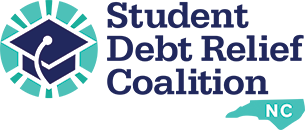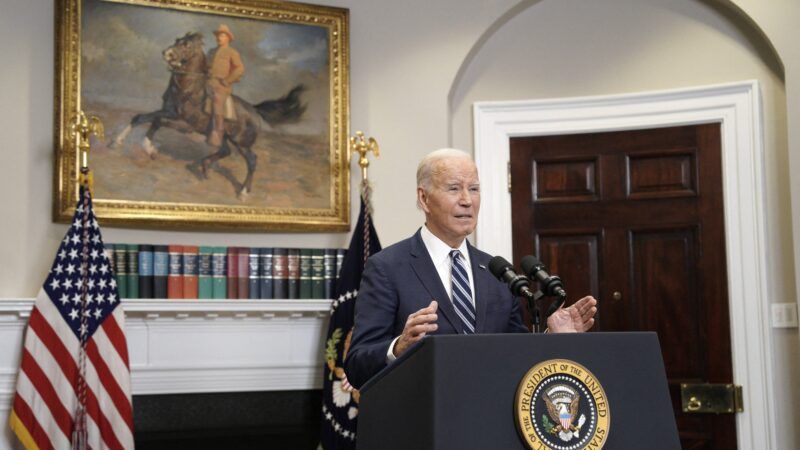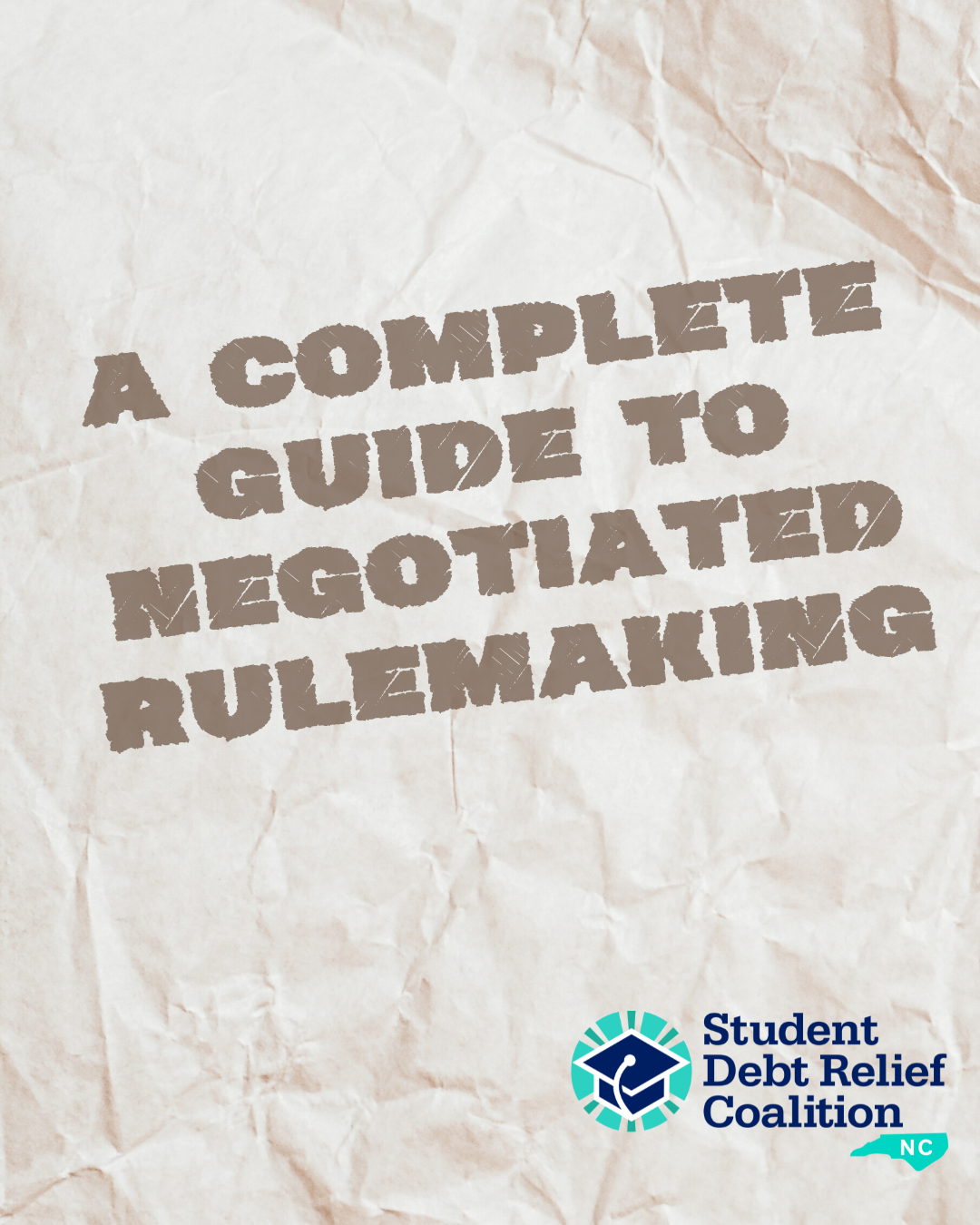What’s Happening Right Now?
The U.S. Department of Education has announced they’re reviewing the rules for federal student loan programs, particularly those affecting Public Service Loan Forgiveness (PSLF) and income-based repayment plans. This is a significant opportunity for everyday people to influence how these programs will work in the future.
What is Negotiated Rulemaking (Neg Reg)?
When the Department of Education wants to change the rules around student loans, they typically:
- Standard process: Write new rules internally, then ask for public feedback after they’re already drafted.
- Negotiated rulemaking: Bring in representatives from affected groups BEFORE writing the rules to help create them together.
Think of negotiated rulemaking like a collaborative writing process:
- The Department invites people to the table who represent different perspectives (borrowers, schools, loan servicers, etc.)
- These representatives (called “negotiators”) attend multiple meetings over several months
- A neutral person helps guide these discussions
- The goal is for everyone to agree on new rules before they’re officially proposed
- For student loan programs specifically, the law requires this collaborative approach
This process gives everyday people a greater voice in shaping policies that will affect them, rather than just commenting on pre-written rules.
Why This Matters for Student Loan Borrowers
This legal requirement ensures that before the Department can change how PSLF, income-driven repayment plans, or other federal student aid programs work, they must:
- Seek public input first
- Include representatives of affected groups in the rule development
- Try to reach consensus on proposed changes
This gives borrowers, advocates, and other stakeholders a stronger voice in the process than they would have with standard rulemaking, where public comment only occurs after rules are already drafted.
What Programs Might Change?
Public Service Loan Forgiveness (PSLF)
PSLF forgives the remaining student loan balance for people who work for qualifying employers like government agencies or nonprofits, make 120 (10 years’ worth) of qualifying monthly payments, and have qualifying loan types (Direct Loans).
Many borrowers have struggled with confusing requirements and application rejections.
Income-Driven Repayment Plans
Income Driven Repayment is an umbrella term referring to four different payment plans that set your monthly student loan payment based on your income and family size: IBR, ICR, PAYE, and SAVE. SAVE is being challenged in court right now, and IBR was put into place by statute (by Congress, not through rulemaking). These plans were put into place by rulemaking originally, and are the subjects of this rulemaking session:
- Pay As You Earn (PAYE): Generally caps payments at 10% of discretionary income
- Income-Contingent Repayment (ICR): Generally caps payments at 20% of discretionary income
Both include forgiveness options after 20-25 years of payments.
Who Should Get Involved?
Anyone connected to student loans should consider participating, especially:
- Current borrowers on income-driven plans or working toward PSLF
- Future borrowers who will take out student loans
- Public service employees (government workers, teachers, nonprofit staff, etc.)
- People who’ve faced problems with current loan programs
- Advocates who work with student loan borrowers
- Family members of people with significant student debt
You don’t need to be an expert to participate! Personal experiences are extremely valuable.
Understanding Public Comment in Negotiated Rulemaking
What Are the “Actual Rules”?
The “actual rules” (the formal regulations) don’t exist yet—that’s precisely the point of this process. The Department of Education is at the very beginning of creating new regulations for student loan programs. The current announcement is simply letting the public know they’re starting this process.
The Negotiated Rulemaking Timeline
- Pre-Rule Development Stage (Current Stage)
- The Department announces intent to create or revise regulations
- They hold public hearings and collect initial comments
- This happens before any draft rules exist
- Purpose: Gather ideas about what problems need to be solved
- Negotiation Stage
- The Department selects negotiators representing different stakeholders
- Negotiators meet over several months to try to reach consensus
- They develop drafts of potential regulations during these meetings
- The public can observe these meetings but typically cannot participate directly
- Notice of Proposed Rulemaking (NPRM) Stage
- After negotiations, the Department publishes proposed rules
- A formal public comment period opens (usually 30-60 days)
- Anyone can submit comments on the specific proposed language
- Final Rule Stage
- The Department reviews all public comments
- They make revisions based on feedback
- Final regulations are published
- Rules typically take effect the following July 1
Public Comment Opportunities
You have two distinct opportunities to provide input:
- Initial Public Comment (happening now)
- Purpose: Help shape what issues will be addressed and suggest approaches
- No specific regulatory text exists yet
- Focus on describing problems and proposing solutions
- Comments influence what topics negotiators will discuss
- Formal Public Comment (happens later)
- Occurs after proposed rules are published
- You’ll respond to specific regulatory language
- Comments can lead to changes in the final rules
What to Focus on Now
Since no draft rules exist yet, your current comments should focus on:
- Problems you’ve experienced with existing loan programs
- Specific changes you want to see
- Ideas for improving PSLF and income-driven repayment
- Priorities you think the Department should consider
This is your chance to help set the agenda before the Department even begins drafting regulations.
How to Make Your Voice Heard
Option 1: Attend a Public Hearing
The Department will host two hearings:
- In-person: Tuesday, April 29, 2025 (location to be announced)
- Virtual: Thursday, May 1, 2025 (online)
At these hearings, you can:
- Listen to what others are saying
- Share your own experiences
- Propose specific changes
To participate:
- Check the Department of Education website for registration details
- Sign up early (speaking slots often fill quickly)
- Prepare remarks (typically limited to 3-5 minutes)
- If attending virtually, test your technology in advance
Option 2: Submit Written Comments
If you can’t attend a hearing or prefer to write your thoughts:
- Go to Regulations.gov (the Federal eRulemaking Portal)
- Search for the Department of Education’s student loan rulemaking notice
- Click the “Comment” button
- Write your comment or upload a document
- Submit before the deadline (30 days after publication in the Federal Register)
If you need accommodation: Contact [email protected] or call 1-866-498-2945
How to Write an Effective Comment
Your comment doesn’t need to use legal language or policy jargon! Here’s a simple structure:
- Introduce yourself: “I am a public school teacher with $45,000 in student loans” or “I work at a nonprofit and have been trying to qualify for PSLF for 5 years.”
- Share your experience: Be specific about challenges you’ve faced. Example: “I submitted my PSLF form three times but was rejected each time for different reasons. First, they said my employer didn’t qualify, then they said my payment history was incomplete…”
- Explain the impact: How have these issues affected your life? Example: “Because of the confusion around qualifying payments, I’ve had to delay buying a home and put off starting a family.”
- Suggest solutions: What would make the program work better? Example: “The Department should create a single, clear application process with real-time tracking of qualifying payments.”
- Connect to broader issues: Why does this matter beyond your situation? Example: “When public servants can’t access loan forgiveness as promised, it discourages talented people from entering vital fields like teaching and social work.”
Topics You Might Address
For PSLF:
- Simplifying the application process
- Expanding qualifying employment, or protecting certain kinds of currently qualifying employment
- Improving communication or clarity of process
- Creating better appeals processes, including feedback or ideas for PSLF Buy Back
For Income-Driven Repayment:
- Making enrollment easier or improving the annual recertification process
- Addressing interest accumulation
- Making payments more affordable through different methods, like a more beneficial definition of “discretionary income” or lower percentages of discretionary income used to calculate
- Making forgiveness provisions more accessible
Why Your Participation Matters
The rules created through this process will affect millions of borrowers for years to come. Your personal story and suggestions can help ensure these programs actually work for the people they’re meant to serve.
Remember: You don’t need to be a policy expert to participate effectively. Your lived experience with student loans is valuable expertise in itself.





